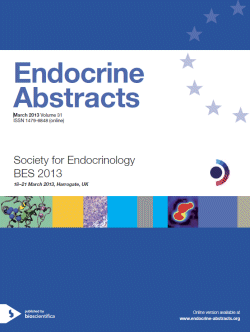Searchable abstracts of presentations at key conferences in endocrinology
Symposia
Hormone Maketh Man
ea0031s2.1 | Hormone Maketh Man | SFEBES2013
Anti-Mullerian hormone: a Sertoli cell hormone that can be used as a predictor of male hypogonadism
Sertoli cells are the most active cell population in the prepubertal testis. During infancy and childhood, male hypogonadism can be evidenced by assessing Sertoli cell function without the need for stimulation tests. Anti-Müllerian hormone (AMH) is a distinctive serum marker of the prepubertal Sertoli cell, which is high from foetal life until puberty. AMH production is stimulated by FSH and potently inhibited by androgens. Initially used only to distinguish between patie...
ea0031s2.2 | Hormone Maketh Man | SFEBES2013
The role of IGFs and the Sertoli cell in driving ‘maleness'
The way to maleness is a long process starting with fertilization when sperm delivers the testis-determining Y chromosome to the oocyte and ending with puberty and the action of testicular hormones. Since Sertoli cells are at the crossroads of the entire process, the analysis of the factors driving their differentiation and function is essential to the global understanding of male sexual development. By using mouse functional genetics, we will show that growth factors of the i...
ea0031s2.3 | Hormone Maketh Man | SFEBES2013
Androgens and male fertility: a long way from the black box theory
In males androgens are primarily made by testicular Leydig cells and act as essential regulators of both fetal masculinization and adult reproductive function. The impact of androgens on gene transcription is largely mediated by the androgen receptor (AR), a member of the steroid hormone super-family of ligand activated transcription factors. AR is expressed widely throughout the body, including several key somatic cell-types in the testis. Although we have known for many year...




